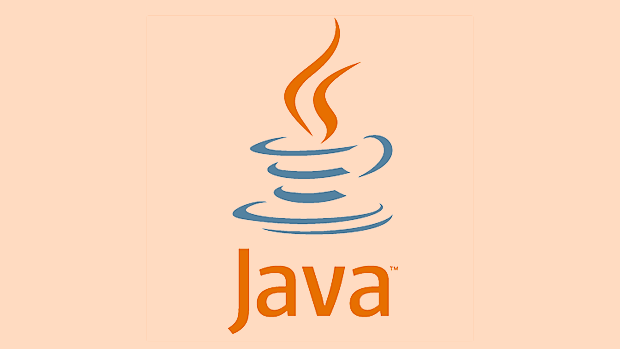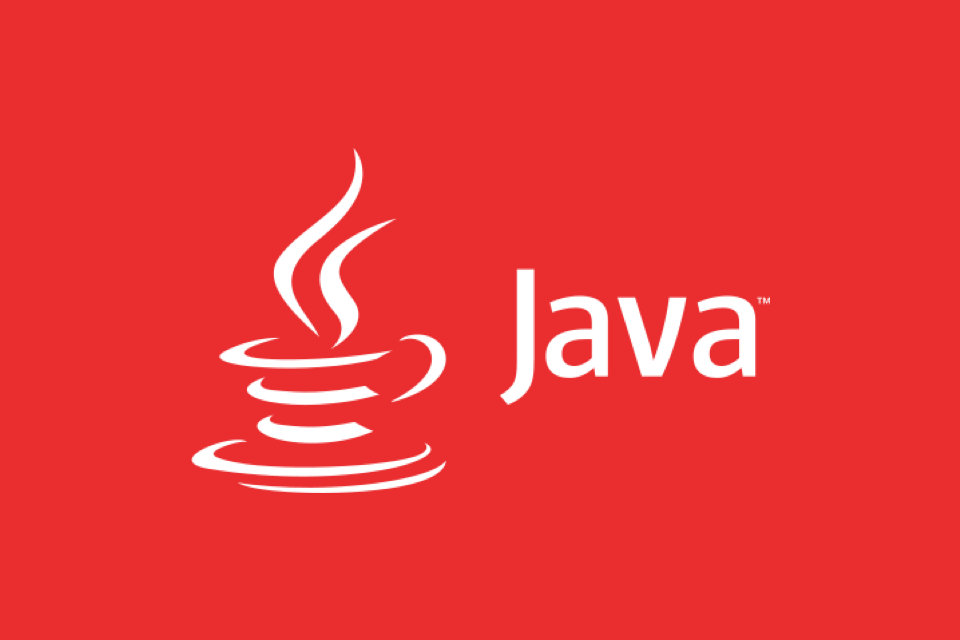Start by setting up a Spring Boot project using Spring Initializr with dependencies like Spring Web, Spring Data JPA, and Lombok for streamlined development. 2. Create a REST controller with @RestController and use annotations like @GetMapping, @PostMapping, @PathVariable, and @RequestBody to define and handle HTTP endpoints effectively. 3. Implement persistence using Spring Data JPA by defining an @Entity class and a repository interface extending JpaRepository, which provides built-in CRUD operations. 4. Apply validation using @Valid and bean validation annotations such as @NotBlank and @Email, and handle errors globally with @ControllerAdvice and a custom exception handler. 5. Generate API documentation automatically using Springdoc OpenAPI, accessible via swagger-ui.html, and enhance it with annotations like @Operation. 6. Follow best practices including using DTOs for API responses, maintaining separation of concerns through service and repository layers, enabling CORS and HTTPS, logging with filters or AOP, and securing the API with Spring Security for authentication and authorization. By following these steps, you can build robust, maintainable, and scalable RESTful APIs with Spring Boot efficiently.

Java API development with the Spring Framework is a go-to approach for building robust, scalable, and maintainable backend services. Spring, especially Spring Boot, simplifies the process of creating RESTful APIs by providing opinionated defaults, dependency injection, and powerful abstractions. Here’s a practical guide to building APIs effectively using Spring.

1. Set Up a Spring Boot Project
Start with Spring Initializr to generate a base project. Choose:
- Project: Maven or Gradle
- Language: Java
- Spring Boot Version: Latest stable
-
Dependencies:
- Spring Web
- Spring Data JPA (for database access)
- Spring Boot DevTools (for auto-reload)
- Lombok (optional, to reduce boilerplate)
Once generated, import into your IDE. The main class will have @SpringBootApplication, which enables auto-configuration and component scanning.

2. Create a REST Controller
Use @RestController to expose HTTP endpoints. For example, a simple user API:
@RestController
@RequestMapping("/api/users")
@RequiredArgsConstructor // Lombok - avoids writing constructor
public class UserController {
private final UserService userService;
@GetMapping
public List<User> getAllUsers() {
return userService.findAll();
}
@GetMapping("/{id}")
public ResponseEntity<User> getUserById(@PathVariable Long id) {
return userService.findById(id)
.map(ResponseEntity::ok)
.orElse(ResponseEntity.notFound().build());
}
@PostMapping
public ResponseEntity<User> createUser(@Valid @RequestBody User user) {
User savedUser = userService.save(user);
return ResponseEntity.ok(savedUser);
}
@DeleteMapping("/{id}")
public ResponseEntity<Void> deleteUser(@PathVariable Long id) {
if (userService.exists(id)) {
userService.delete(id);
return ResponseEntity.noContent().build();
}
return ResponseEntity.notFound().build();
}
}Key annotations:

@GetMapping,@PostMapping, etc. — map HTTP methods@PathVariable— extract values from URL@RequestBody— bind JSON to Java object@Valid— trigger bean validation (e.g., with@NotBlank,@Email)
3. Use Spring Data JPA for Persistence
Define a JPA entity:
@Entity
@Table(name = "users")
public class User {
@Id
@GeneratedValue(strategy = GenerationType.IDENTITY)
private Long id;
@NotBlank
private String name;
@Email
private String email;
// Getters and setters (or use Lombok @Data)
}Create a repository interface:
public interface UserRepository extends JpaRepository<User, Long> {
}Spring Data JPA automatically provides CRUD methods. No implementation needed.
Then inject it into a service:
@Service
@Transactional
public class UserService {
private final UserRepository userRepository;
public UserService(UserRepository userRepository) {
this.userRepository = userRepository;
}
public List<User> findAll() {
return userRepository.findAll();
}
public Optional<User> findById(Long id) {
return userRepository.findById(id);
}
public User save(User user) {
return userRepository.save(user);
}
public void delete(Long id) {
userRepository.deleteById(id);
}
public boolean exists(Long id) {
return userRepository.existsById(id);
}
}4. Handle Validation and Errors
Use bean validation annotations (javax.validation or jakarta.validation):
public class User {
@NotBlank(message = "Name is required")
private String name;
@Email(message = "Email should be valid")
private String email;
}Handle validation errors globally:
@ControllerAdvice
public class GlobalExceptionHandler {
@ResponseStatus(HttpStatus.BAD_REQUEST)
@ExceptionHandler(MethodArgumentNotValidException.class)
public ResponseEntity<Map<String, String>> handleValidationExceptions(
MethodArgumentNotValidException ex) {
Map<String, String> errors = new HashMap<>();
ex.getBindingResult().getFieldErrors().forEach(error ->
errors.put(error.getField(), error.getDefaultMessage())
);
return ResponseEntity.badRequest().body(errors);
}
}5. Add Documentation with OpenAPI (Swagger)
Use Springdoc OpenAPI (modern replacement for Swagger):
Add dependency:
<dependency>
<groupId>org.springdoc</groupId>
<artifactId>springdoc-openapi-starter-webmvc-ui</artifactId>
<version>2.0.2</version>
</dependency>Access API docs at: http://localhost:8080/swagger-ui.html
You can add descriptions using annotations like @Operation, @Parameter, etc.
6. Best Practices
- Use DTOs (Data Transfer Objects): Don’t expose entities directly via API. Map to DTOs using model mappers like MapStruct or manual conversion.
- Separate concerns: Controller → Service → Repository pattern.
- Use
@Validand constraints for input validation. - Enable HTTPS and CORS when needed:
@Bean public CorsConfigurationSource corsConfigurationSource() { CorsConfiguration configuration = new CorsConfiguration(); configuration.setAllowedOrigins(Arrays.asList("http://localhost:3000")); configuration.setAllowedMethods(Arrays.asList("GET","POST","PUT","DELETE")); UrlBasedCorsConfigurationSource source = new UrlBasedCorsConfigurationSource(); source.registerCorsConfiguration("/**", configuration); return source; } - Log requests/responses using filters or AOP if needed.
- Secure your API with Spring Security when adding authentication (JWT, OAuth2).
Building APIs with Spring is straightforward once you understand the core components. With Spring Boot, you can go from zero to a production-ready API in minutes. Focus on clean architecture, validation, and documentation to make your APIs developer-friendly and maintainable.
Basically, start small, use the right annotations, and let Spring do the heavy lifting.
The above is the detailed content of Java API Development with the Spring Framework. For more information, please follow other related articles on the PHP Chinese website!

Hot AI Tools

Undress AI Tool
Undress images for free

Undresser.AI Undress
AI-powered app for creating realistic nude photos

AI Clothes Remover
Online AI tool for removing clothes from photos.

Clothoff.io
AI clothes remover

Video Face Swap
Swap faces in any video effortlessly with our completely free AI face swap tool!

Hot Article

Hot Tools

Notepad++7.3.1
Easy-to-use and free code editor

SublimeText3 Chinese version
Chinese version, very easy to use

Zend Studio 13.0.1
Powerful PHP integrated development environment

Dreamweaver CS6
Visual web development tools

SublimeText3 Mac version
God-level code editing software (SublimeText3)
 Asynchronous Programming Techniques in Modern Java
Jul 07, 2025 am 02:24 AM
Asynchronous Programming Techniques in Modern Java
Jul 07, 2025 am 02:24 AM
Java supports asynchronous programming including the use of CompletableFuture, responsive streams (such as ProjectReactor), and virtual threads in Java19. 1.CompletableFuture improves code readability and maintenance through chain calls, and supports task orchestration and exception handling; 2. ProjectReactor provides Mono and Flux types to implement responsive programming, with backpressure mechanism and rich operators; 3. Virtual threads reduce concurrency costs, are suitable for I/O-intensive tasks, and are lighter and easier to expand than traditional platform threads. Each method has applicable scenarios, and appropriate tools should be selected according to your needs and mixed models should be avoided to maintain simplicity
 Best Practices for Using Enums in Java
Jul 07, 2025 am 02:35 AM
Best Practices for Using Enums in Java
Jul 07, 2025 am 02:35 AM
In Java, enums are suitable for representing fixed constant sets. Best practices include: 1. Use enum to represent fixed state or options to improve type safety and readability; 2. Add properties and methods to enums to enhance flexibility, such as defining fields, constructors, helper methods, etc.; 3. Use EnumMap and EnumSet to improve performance and type safety because they are more efficient based on arrays; 4. Avoid abuse of enums, such as dynamic values, frequent changes or complex logic scenarios, which should be replaced by other methods. Correct use of enum can improve code quality and reduce errors, but you need to pay attention to its applicable boundaries.
 Understanding Java NIO and Its Advantages
Jul 08, 2025 am 02:55 AM
Understanding Java NIO and Its Advantages
Jul 08, 2025 am 02:55 AM
JavaNIO is a new IOAPI introduced by Java 1.4. 1) is aimed at buffers and channels, 2) contains Buffer, Channel and Selector core components, 3) supports non-blocking mode, and 4) handles concurrent connections more efficiently than traditional IO. Its advantages are reflected in: 1) Non-blocking IO reduces thread overhead, 2) Buffer improves data transmission efficiency, 3) Selector realizes multiplexing, and 4) Memory mapping speeds up file reading and writing. Note when using: 1) The flip/clear operation of the Buffer is easy to be confused, 2) Incomplete data needs to be processed manually without blocking, 3) Selector registration must be canceled in time, 4) NIO is not suitable for all scenarios.
 How Java ClassLoaders Work Internally
Jul 06, 2025 am 02:53 AM
How Java ClassLoaders Work Internally
Jul 06, 2025 am 02:53 AM
Java's class loading mechanism is implemented through ClassLoader, and its core workflow is divided into three stages: loading, linking and initialization. During the loading phase, ClassLoader dynamically reads the bytecode of the class and creates Class objects; links include verifying the correctness of the class, allocating memory to static variables, and parsing symbol references; initialization performs static code blocks and static variable assignments. Class loading adopts the parent delegation model, and prioritizes the parent class loader to find classes, and try Bootstrap, Extension, and ApplicationClassLoader in turn to ensure that the core class library is safe and avoids duplicate loading. Developers can customize ClassLoader, such as URLClassL
 Handling Common Java Exceptions Effectively
Jul 05, 2025 am 02:35 AM
Handling Common Java Exceptions Effectively
Jul 05, 2025 am 02:35 AM
The key to Java exception handling is to distinguish between checked and unchecked exceptions and use try-catch, finally and logging reasonably. 1. Checked exceptions such as IOException need to be forced to handle, which is suitable for expected external problems; 2. Unchecked exceptions such as NullPointerException are usually caused by program logic errors and are runtime errors; 3. When catching exceptions, they should be specific and clear to avoid general capture of Exception; 4. It is recommended to use try-with-resources to automatically close resources to reduce manual cleaning of code; 5. In exception handling, detailed information should be recorded in combination with log frameworks to facilitate later
 How does a HashMap work internally in Java?
Jul 15, 2025 am 03:10 AM
How does a HashMap work internally in Java?
Jul 15, 2025 am 03:10 AM
HashMap implements key-value pair storage through hash tables in Java, and its core lies in quickly positioning data locations. 1. First use the hashCode() method of the key to generate a hash value and convert it into an array index through bit operations; 2. Different objects may generate the same hash value, resulting in conflicts. At this time, the node is mounted in the form of a linked list. After JDK8, the linked list is too long (default length 8) and it will be converted to a red and black tree to improve efficiency; 3. When using a custom class as a key, the equals() and hashCode() methods must be rewritten; 4. HashMap dynamically expands capacity. When the number of elements exceeds the capacity and multiplies by the load factor (default 0.75), expand and rehash; 5. HashMap is not thread-safe, and Concu should be used in multithreaded
 Explained: Java Polymorphism in Object-Oriented Programming
Jul 05, 2025 am 02:52 AM
Explained: Java Polymorphism in Object-Oriented Programming
Jul 05, 2025 am 02:52 AM
Polymorphism is one of the core features of Java object-oriented programming. Its core lies in "one interface, multiple implementations". It implements a unified interface to handle the behavior of different objects through inheritance, method rewriting and upward transformation. 1. Polymorphism allows the parent class to refer to subclass objects, and the corresponding methods are called according to the actual object during runtime; 2. The implementation needs to meet the three conditions of inheritance relationship, method rewriting and upward transformation; 3. It is often used to uniformly handle different subclass objects, collection storage and framework design; 4. When used, only the methods defined by the parent class can be called. New methods added to subclasses need to be transformed downward and accessed, and pay attention to type safety.
 Effective Use of Java Enums and Best Practices
Jul 07, 2025 am 02:43 AM
Effective Use of Java Enums and Best Practices
Jul 07, 2025 am 02:43 AM
Java enumerations not only represent constants, but can also encapsulate behavior, carry data, and implement interfaces. 1. Enumeration is a class used to define fixed instances, such as week and state, which is safer than strings or integers; 2. It can carry data and methods, such as passing values ??through constructors and providing access methods; 3. It can use switch to handle different logics, with clear structure; 4. It can implement interfaces or abstract methods to make differentiated behaviors of different enumeration values; 5. Pay attention to avoid abuse, hard-code comparison, dependence on ordinal values, and reasonably naming and serialization.






